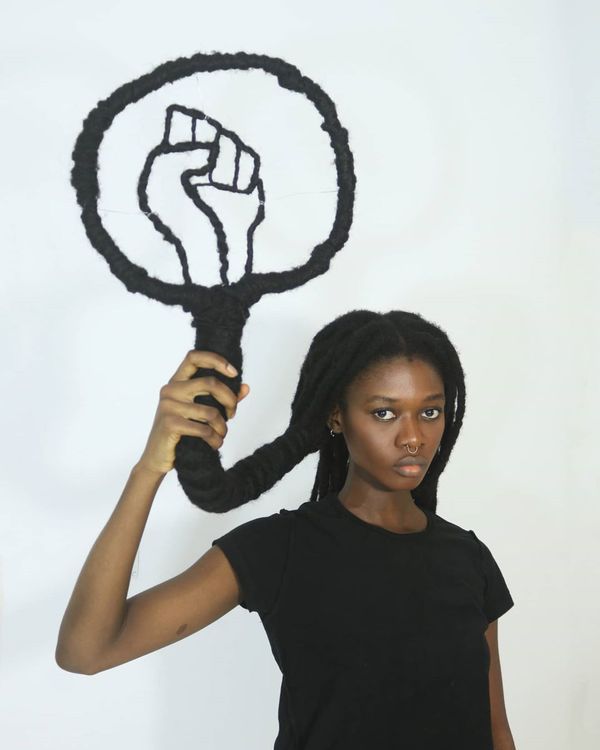
“There’s a special bravery and courageousness in the air, and I think it is present in and among artists as well,” says Rujeko Hockley, the Whitney Museum of American Art’s assistant curator. Last Friday for Juneteenth — which commemorates the official end of slavery in the United States — Hockley partnered with Instagram to put on a virtual show of Black protest art.
The show featured exclusive posters and illustrations, both historical and new, that tell the story of Black protest art and design over time from artists like Nina Abney, Alexandra Bowman, Melissa Koby, Temi Coker, and Nikkolas Smith. Instagram shared the images across its @Instagram and @design pages, making them accessible to over 350 million people.
Hockley wanted the show to speak to this truly unprecedented moment, when the inequalities revealed during quarantine have combined with a global Black Lives Matter movement for social change. “I think we are seeing folks take to the streets with this changed outlook. Art takes time, and sometimes you need that time to reflect,” says Hockley.
According to Hockley, art extends our vision, literally and figuratively, allowing us to see our society and culture — past, present, and future — in a new light and through new eyes. “Protest operates similarly, albeit more emphatically,” she told the Cut. “Both force us to think expansively, beyond pure logic or past precedent. As the rallying cry goes, another world is possible; we only need imagine it. Art and protest, both, help us do this ‘freedom dreaming.’”
You can follow the exhibit on the #DesignforBlackLives hashtag; Instagram has also created #ShareBlackStories to center Black perspectives year-round. See some of the works below.

